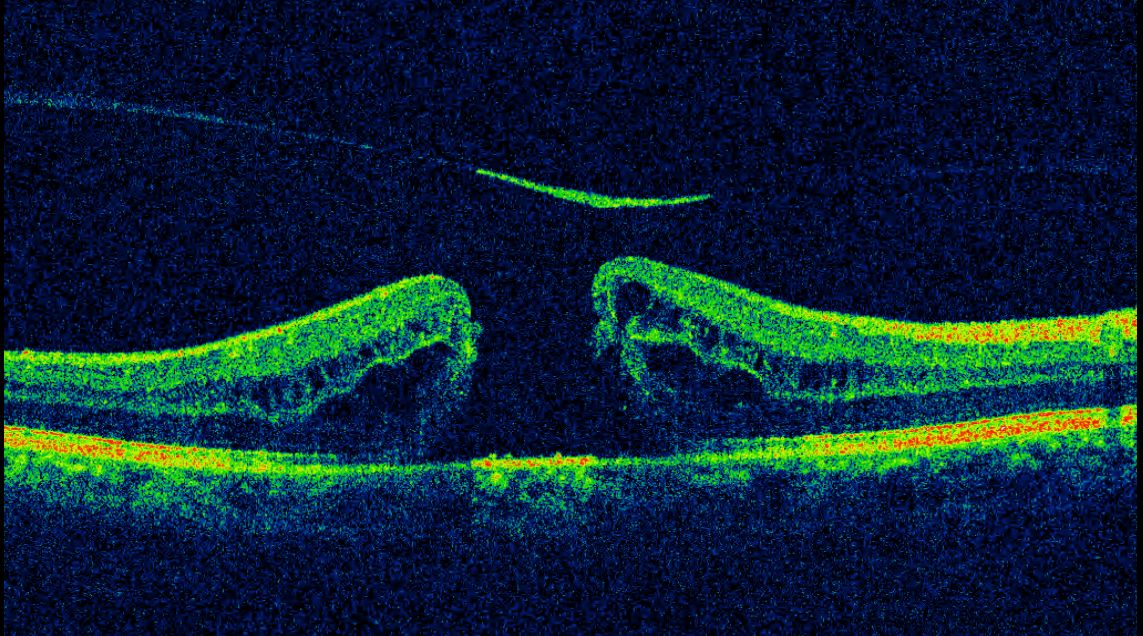
01 Jun Macular Hole
Macula is the central, most vital part of the retina. Macular hole is when a tear or opening forms in the macula.
As the hole forms, things in the central vision look blurry, wavy or distorted. As the hole grows, a dark or blind spot appears. A macular hole does not affect the peripheral (side) vision.
As one gets older, the jelly of the eye (called the vitreous) begins to shrink and pull away from the retina. Sometimes this causes the macula to stretch and a hole to form.
Sometimes it can also form when the macula swells from other eye disease or after an eye injury.
An OCT scan is done to obtain very detailed pictures of the macula. If the scan shows sufficient damage, then a surgery called vitrectomy is advised.
In this surgery, the vitreous that is pulling on the macula is removed. An additional layer on the surface of the macula (called the ILM) that is less than a micron in thickness is also removed. A gas bubble is placed inside the eye to flatten the macular hole and hold it in place while the eye heals. The gas bubble slowly goes away on its own.
- One must keep the face down (avoid face up position at all times) for up to a week. This is to keep the gas bubble in place.
- One cannot fly in an airplane until the gas bubble is gone.
- If one needs to have any other type of surgery, be sure to tell the doctor before surgery that one has a gas bubble in the eye.
- The vision can improve after the macular hole closes. It may take several months for the hole to finish healing. How much vision one get back depends on the size of the macular hole and is not predictable. It also depends on how long the hole was there before one had surgery.
Like any surgery, this surgery also has some risks although extremely rare. They include eye infection, bleeding in the eye, detachment of the retina, increase in eye pressure and cataract.



Sorry, the comment form is closed at this time.